It looks like you're using an Ad Blocker.
Please white-list or disable AboveTopSecret.com in your ad-blocking tool.
Thank you.
Some features of ATS will be disabled while you continue to use an ad-blocker.
share:
Not much I can add in terms of a post, Interstellar craft are a little out of my depth, Enjoy
visit the full image gallery here, I have included a small section :www.space.com...
1, Two nuclear powered NERVA spacecraft being assembled in orbit, with the crew being ferried with an early design space shuttle, for the journey to Mars.
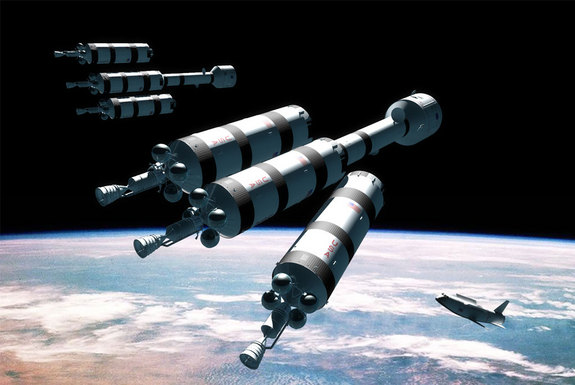
2.
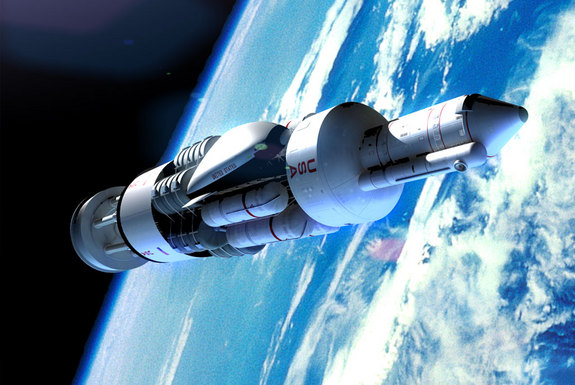
3.
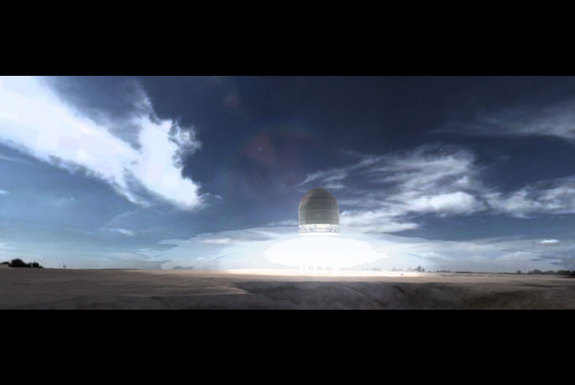
4.
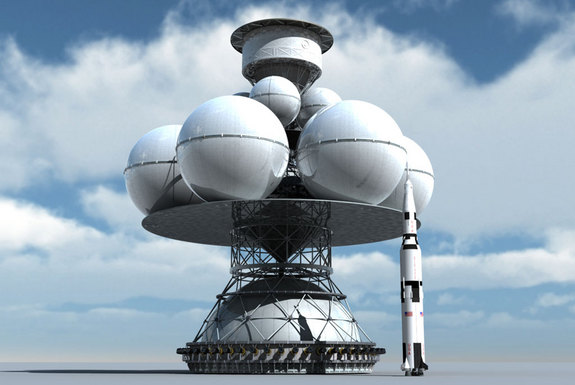
5.
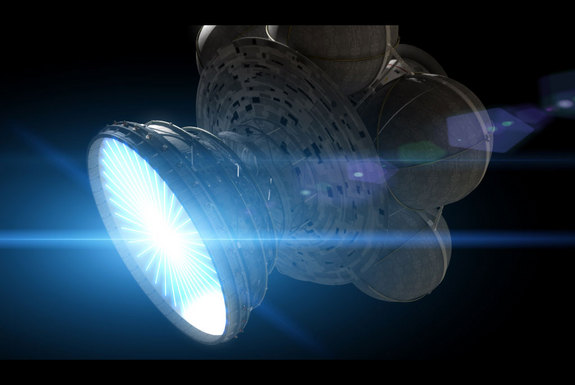
6.

7.
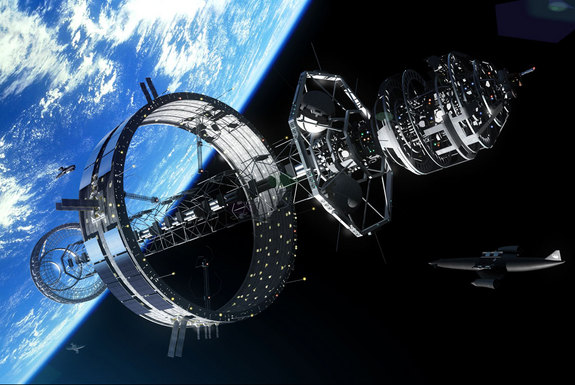
8.
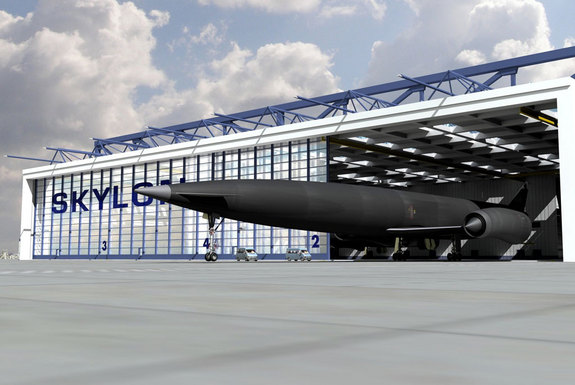
Hungary-based space illustrator Adrian Mann is a graphical engineer for Project Icarus, an effort to research the possibilities for interstellar travel. When scientists conceive of spaceships for travel to another star, most proposals require advanced and exotic propulsion mechanisms, including nuclear power and antimatter power. The following illustrations by Mann show some of the proposed concepts for vehicles to take us beyond the solar system.
visit the full image gallery here, I have included a small section :www.space.com...
1, Two nuclear powered NERVA spacecraft being assembled in orbit, with the crew being ferried with an early design space shuttle, for the journey to Mars.

2.
.
The Orion Mars spacecraft shown here has a crew accommodation section, 2 Mars landers in the form of lifting bodies, and enough small nuclear devices to propel the ship to and from Mars

3.
Given the colossal power of nuclear explosions, enormous Orion ships were envisaged, to be launched from remote desert areas such as Jackass Flats in the Nevada Test Range.

4.
Weighing in at 60,000 tons when fully fuelled, Daedalus would dwarf even the Saturn V rocket.

5.
Dedalus Beams Daedalus' Deuterium/Helium 3 fuel pellets are injected into the engine, where they are hit by electron beams, compressing them to the point that fusion occurs. Magnetic fields contain the expanding plasma.

6.
VARIES – Vacuum to Antimatter Rocket Interstellar Explorer System, is a concept from Richard Obousy that would use enormous solar arrays to generate power for extremely powerful lasers, which, when fired at empty space, would create particles of antimatter which could be stored and used as fuel. The process would be used at the vehicle's destination to create fuel for the return journey.

7.
Icarus construct Future starships may be constructed in Earth orbit using a ring-type construction facility, which could have hotel rooms where guests could observe the construction.

8.
SKYLON, a concept vehicle from Reaction Engines Ltd., is an entirely reusable single stage-to-orbit launch vehicle, based on revolutionary engine technology.SKYLON, a concept vehicle from Reaction Engines Ltd., is an entirely reusable single stage-to-orbit launch vehicle, based on revolutionary engine technology.

edit on 1-7-2013 by zazzafrazz because: (no reason given)
reply to post by zazzafrazz
Nice! I am posting (and giving you a S&F) so a can come back later. That's a good piece of information you found mate!
Nice! I am posting (and giving you a S&F) so a can come back later. That's a good piece of information you found mate!
Fabulous ideas, but how do we get past the Van Allen belt without cooking ourselves?
I still feel the probable answer is to somehow fold space and slip through it rather than the mechanical method.
But great information thank you.
I still feel the probable answer is to somehow fold space and slip through it rather than the mechanical method.
But great information thank you.
So many concepts so Why are we still using liquid rockets for space travel. I would like to see Someone go back to the moon and set up a permanent
base but I have doubts it will happen this century.
Originally posted by Shiloh7
Fabulous ideas, but how do we get past the Van Allen belt without cooking ourselves?
Good point.
Hm, just brainstorming here, but here it is:
Doesn't the magnetic poles of the Earth provide a "hole" through which we could in theory travel safely?

edit on 1-7-2013 by swanne because: (no reason given)
Originally posted by Shiloh7
Fabulous ideas, but how do we get past the Van Allen belt without cooking ourselves?
I still feel the probable answer is to somehow fold space and slip through it rather than the mechanical method.
But great information thank you.
They actually have looked into creating a "deflector shield" that will be able to handle the radiation.
Check this link out link
So you’ve signed up for the trip to Mars and ready to go where no one has gone before. But there’s just one problem: radiation. NASA’s Curiosity rover on the Red Planet discovered that any astronauts traveling between Earth and Mars would be exposed to dangerously high amounts of radiation in space, thanks to cosmic rays and high-energy particles from the sun. This radiation could cause serious health problems — such as neurodegeneration — in astronauts and is something scientists would like to avoid. Unfortunately, a solution to this problem hasn’t been solved... until now.
Although it was previously thought that shielding to block radiation would have to be relatively thick and too heavy to be attached to a spacecraft, scientists are looking at Earth’s own magnetic field for a better answer. On Earth, we are protected from the Sun’s damaging rays by the presence of the magnetosphere. So scientists decided to create something similar for space travel.
Our future is amongst the stars in my opinion. I eagerly await the next scientific development to get us there.
edit on 1-7-2013 by MDDoxs
because: (no reason given)
Good info here S & F
Here a thread with more info on the SABRE Space Plane
www.abovetopsecret.com...
Sure hope they need electrician up there
Here a thread with more info on the SABRE Space Plane
www.abovetopsecret.com...
Sure hope they need electrician up there
Originally posted by swanne
Originally posted by Shiloh7
Fabulous ideas, but how do we get past the Van Allen belt without cooking ourselves?
Good point.
Hm, just brainstorming here, but here it is:
Doesn't the magnetic poles of the Earth provide a "hole" through which we could in theory travel safely?
edit on 1-7-2013 by swanne because: (no reason given)
Yes, they do.
Take the trajectory taken by the Apollo Moon missions, which was mostly through (or near to) the top or bottom "holes" in the belts. If you did that, the trip through the belts would be very quick. and radiation exposure would be kept to a relatively safe minimum.
edit on 7/1/2013 by Soylent Green Is People because: (no reason given)
Cool concepts, however they kinda got a 60's vibe going on with the liquid boosters.
We should come up with something better if we ever want to go interstellar.
www.space.com...
We should come up with something better if we ever want to go interstellar.
www.space.com...
They seem to have forgot to include the DoD's TR-3B Astra triangle ship, with an associated space-dockable NASA (Dr. Harold White) warpdrive ring,
for FTL speed.
Personally
I don't think the future of space travel will look anything like this
These are all designs based on rockets and iron drives, these propulsion are utterly useless and outdated if we want to get any further than the Moon & Mars, let alone to the Moon & Mars any faster, really these are nothing but more sleeker & expensive designs based on technology we currently have, which is already expensive enough in which case i can't see any of these designs ever becoming a reality in the future
I think we will be looking at things with other types of propulsion's that would make space travel more feasible such as warp drives, anti gravity propulsion, which do not require exhausts, which also will completely change the shape and design,
The long rocket shape is only essential to rocket & iron drive to over come earth gravity and be more effective in fuel consumption, but using things like warp drive & anti gravity shapes not going to be a factor anymore, but having a 360% view of your surrounding will be appalling for travelers, so maybe we will see shapes like Disks & Spheres oddly enough
I don't think the future of space travel will look anything like this
These are all designs based on rockets and iron drives, these propulsion are utterly useless and outdated if we want to get any further than the Moon & Mars, let alone to the Moon & Mars any faster, really these are nothing but more sleeker & expensive designs based on technology we currently have, which is already expensive enough in which case i can't see any of these designs ever becoming a reality in the future
I think we will be looking at things with other types of propulsion's that would make space travel more feasible such as warp drives, anti gravity propulsion, which do not require exhausts, which also will completely change the shape and design,
The long rocket shape is only essential to rocket & iron drive to over come earth gravity and be more effective in fuel consumption, but using things like warp drive & anti gravity shapes not going to be a factor anymore, but having a 360% view of your surrounding will be appalling for travelers, so maybe we will see shapes like Disks & Spheres oddly enough
There's something else missing in these concepts.
A nose shield.
When traveling anywhere near the speed of light, it's very important to have some sort of deflector shield. The most sound thing would be a large iron asteroid. Smashing into something going any reasonable fraction of the speed of light would be completely devastating to a craft. Even micrometeorites would be fatal going that fast.
A nose shield.
When traveling anywhere near the speed of light, it's very important to have some sort of deflector shield. The most sound thing would be a large iron asteroid. Smashing into something going any reasonable fraction of the speed of light would be completely devastating to a craft. Even micrometeorites would be fatal going that fast.
reply to post by zazzafrazz
Not sure I'd like to be travelling in Space near-enough strapped to a Nuclear Bomb but great Designs!
Not sure I'd like to be travelling in Space near-enough strapped to a Nuclear Bomb but great Designs!
Originally posted by swanne
Originally posted by Shiloh7
Fabulous ideas, but how do we get past the Van Allen belt without cooking ourselves?
Good point.
Hm, just brainstorming here, but here it is:
Doesn't the magnetic poles of the Earth provide a "hole" through which we could in theory travel safely?
edit on 1-7-2013 by swanne because: (no reason given)
Didn't the Apollo missions have to get through it? I'm pretty sure they've got that one covered. Could be wrong though, I suppose.
If we are going to speculate on futuristic space travel, then I am going to speculate as to why we are not currently sending men back to the moon, or
to Mars and beyond. There is a quarantine of Earth, we are still too primitive to be allowed out into space. With our warmongering mentality, if we
were to find life on other planets in our own solar system or beyond, we would try to destroy them. Just look what we are still doing on this planet.
We may have been allowed to go to the moon originally because it was somewhat harmless, and so that our controllers could see if we were going to turn
the corner on our imperialistic ways. Sadly we have not, and until we have proven ourselves here on Earth we will not be going anywhere anytime soon.
All this neat space technology, and no aliens within our range to go visit. We won't find an inhabited alien planet in a thousand years that we
can go visit. I think we may be going in the wrong direction.
new topics
-
God's Righteousness is Greater than Our Wrath
Religion, Faith, And Theology: 3 hours ago -
Electrical tricks for saving money
Education and Media: 6 hours ago -
VP's Secret Service agent brawls with other agents at Andrews
Mainstream News: 8 hours ago -
Sunak spinning the sickness figures
Other Current Events: 8 hours ago -
Nearly 70% Of Americans Want Talks To End War In Ukraine
Political Issues: 8 hours ago -
Late Night with the Devil - a really good unusual modern horror film.
Movies: 10 hours ago
top topics
-
VP's Secret Service agent brawls with other agents at Andrews
Mainstream News: 8 hours ago, 9 flags -
Cats Used as Live Bait to Train Ferocious Pitbulls in Illegal NYC Dogfighting
Social Issues and Civil Unrest: 12 hours ago, 8 flags -
Electrical tricks for saving money
Education and Media: 6 hours ago, 4 flags -
HORRIBLE !! Russian Soldier Drinking Own Urine To Survive In Battle
World War Three: 16 hours ago, 3 flags -
Nearly 70% Of Americans Want Talks To End War In Ukraine
Political Issues: 8 hours ago, 3 flags -
Sunak spinning the sickness figures
Other Current Events: 8 hours ago, 3 flags -
Late Night with the Devil - a really good unusual modern horror film.
Movies: 10 hours ago, 2 flags -
The Good News According to Jesus - Episode 1
Religion, Faith, And Theology: 14 hours ago, 1 flags -
God's Righteousness is Greater than Our Wrath
Religion, Faith, And Theology: 3 hours ago, 0 flags
active topics
-
How ageing is" immune deficiency"
Medical Issues & Conspiracies • 34 • : angelchemuel -
Nearly 70% Of Americans Want Talks To End War In Ukraine
Political Issues • 13 • : Freeborn -
Mood Music Part VI
Music • 3101 • : ThatSmellsStrange -
VP's Secret Service agent brawls with other agents at Andrews
Mainstream News • 41 • : ThatSmellsStrange -
HORRIBLE !! Russian Soldier Drinking Own Urine To Survive In Battle
World War Three • 32 • : DaRAGE -
New whistleblower Jason Sands speaks on Twitter Spaces last night.
Aliens and UFOs • 55 • : baablacksheep1 -
Cats Used as Live Bait to Train Ferocious Pitbulls in Illegal NYC Dogfighting
Social Issues and Civil Unrest • 20 • : Asher47 -
Electrical tricks for saving money
Education and Media • 4 • : Lumenari -
DONALD J. TRUMP - 2024 Candidate for President - His Communications to Americans and the World.
2024 Elections • 514 • : WeMustCare -
The Acronym Game .. Pt.3
General Chit Chat • 7744 • : bally001
